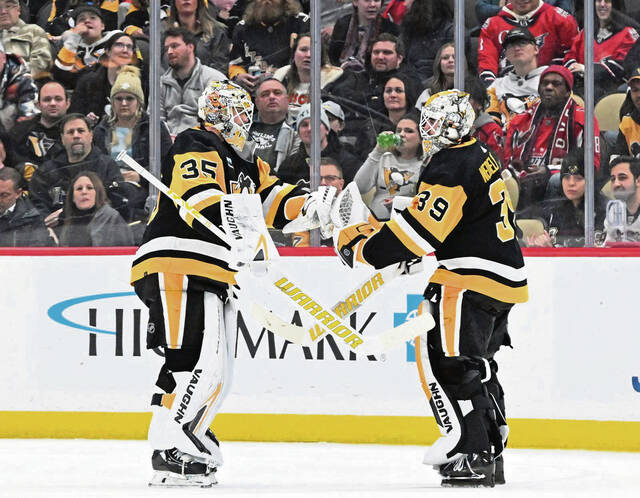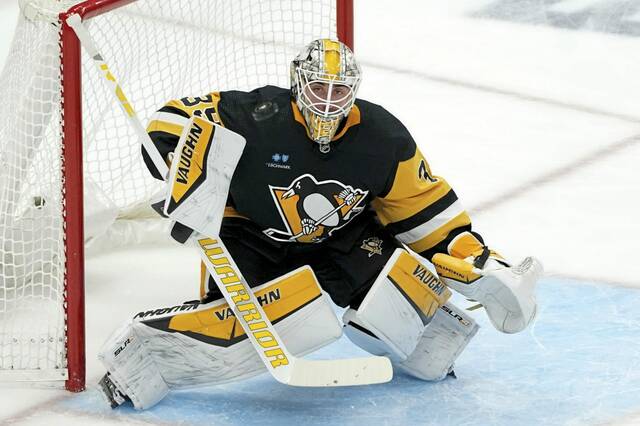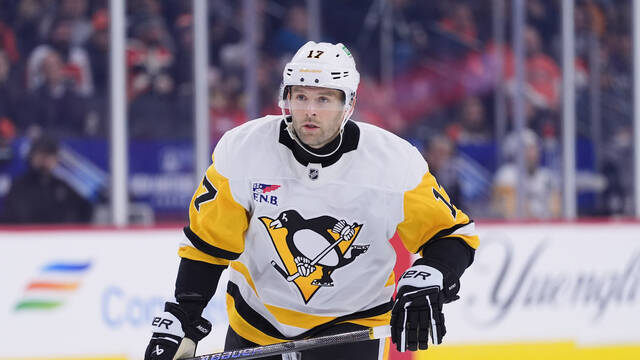Patrick Roy doesn’t know why goaltenders don’t routinely play more than 60 games — or even 70 — a season these days.
But he knows exactly how he would feel if he didn’t get such a workload were he still strapping on the pads in today’s NHL.
“Good question,” Roy said in mid-February, while in Pittsburgh as head coach of the New York Islanders. “I have no idea. When I was not playing 60-plus games, I was not very happy. If that makes me selfish or whatever is, I don’t know.
“But I felt like I had the capability of playing those games and now, things are a little different.”
Things have changed since Roy and many of his contemporaries would regularly start the bulk of their team’s games over an 82-game season.
As arguably the greatest goaltender in NHL history, Roy was north of 60 games a season in 11 of his final 12 seasons as a goaltender with the Montreal Canadiens and Colorado Avalanche.
The lone exception during that stretch was the lockout-shortened 1994-95 campaign when he played in a league-best 43 games over a 48-game schedule.
The final season of Roy’s dazzling career came in 2002-03 when he appeared in only 63 games for the Avalanche. That ample figure was merely the 11th-best figure in the league among goaltenders.
Last season, Connor Hellebuyck of the Winnipeg Jets and Juuse Saros of the Nashville Predators led the league with 64 games each.
Tristan Jarry, who was hobbled badly in the second half of the season because of injury, paced the Penguins with 47 games in 2022-23.
This season, Jarry has been healthy through his first 39 games of the season and theoretically could top out at 64 games.
But that is unlikely given the presence of backup Alex Nedeljkovic. A free agent signing this past offseason, Nedeljkovic was brought in to take on some of the workload to spare some wear and tear on Jarry.
To date, those designs have unfolded as hoped.
“That’s something that you see around the league now,” said Jarry, who made 32 saves on 35 shots and improved to 17-17-4 in a 4-3 overtime win in Vancouver on Tuesday night.
“You need two, three goalies to be able to play. You need two, three goalies that are able to win. It doesn’t matter who’s in net at any point. You know what goalie is in net is going to give you a chance to win. Alex, myself and (reserve Magnus Hellberg) have done a great job this year just being able to have that presence for the guys and be people that they can lean on.”
Goaltending platoons aren’t a new innovation. They have been around in some fashion since the mid-1960s when the NHL passed rules requiring teams to dress two goaltenders in games. And at times, stars shared the duties.
The 1968-69 St. Louis Blues had two future Hockey Hall of Famers in Glenn Hall and Jacques Plante alternating.
But the days of several goaltenders logging 60-plus (or even 70) a season are largely a relic of a deleted timeline.
The last Penguins goaltender to surpass 60 games in a season was Marc-Andre Fleury, who logged 64 in 2014-15.
“It’s probably the nature of how the position has played,” Penguins coach Mike Sullivan said. “That’s evolved. The way the game is played — with the speed of the game — that’s evolved. I’m not sure specifically why it’s developed the way that it has, but I think those are two significant factors, both the way the position itself is played and then the evolution of the game with the speed, how physically taxing it is on goaltenders.
“When you look at the last, probably, two-plus decades of Stanley Cup teams … the majority of the teams manage the workload of the goaltender so that their respective goalie has the ability to be at his best when the stakes get high. Managing that workload is a critical part of that process. When you look at the way the game is played right now, there aren’t too many teams that have one guy go wire to wire. Most teams are utilizing two guys or utilizing what they would deem their backup goalie in a more significant role than they have in the past.”
That shift isn’t exclusive to the NHL either. It has largely happened at many levels of professional hockey all over the globe.
Hellberg, who has played for 19 teams in seven leagues, five countries and three continents over his nomadic career, has seen it play out that way throughout most of his stops around the Earth.
“It’s more and more common now,” Hellberg said. “Even when I played in Russia, we had (multiple) guys that (were) helping out. Especially since the season is so long, there’s a tough workload. If you have two or three guys that can do the job, I think it’s good in the long run.”
It certainly benefited last season’s Stanley Cup champions, the Vegas Golden Knights, who used four goaltenders — Laurent Brossoit, Adin Hill, Jonathan Quick and Logan Thompson — in some capacity throughout the regular season before winning that franchise’s first Stanley Cup title.
Admittedly, injuries — particularly to incumbent starter Robin Lehner — played a role in how the Golden Knights deployed their goaltenders but they clearly saw the need for depth at the position.
Especially since so few goaltenders hit that 60-game mark these days.
“Obviously, a few guys can maybe do it,” Hellberg said. “It just depends on the workload. If you play a ton of games, maybe you don’t practice as much. You just try to keep your workload just playing the games. At the same time, you have to have time to work on the technical stuff in games, too. I think we’re getting away with it a little bit. The game is becoming, I feel like, a lot faster. For goalies, I think it’s a little bit more demanding these days. You have to move a lot faster because (shooters) rip the puck so fast.”
Jarry’s quickness — and just about every other aspect of his game — was impaired last season by his various injuries. This season, he has been relatively healthy, aside from an odd mishap in early November when he took a puck to the face after his mask was dislodged.
Nedeljkovic, a former starter with the Carolina Hurricanes and Detroit Red Wings, has received a fair share of starts beyond situations such as games on back-to-back days, to give Jarry a physical and mental rest from the rigors of the season. He is 9-4-4 this season with a 2.67 goals-against average and .915 save percentage.
“He’s, obviously, been a great partner,” Jarry said. “He pushes me hard. He has a great work ethic. Obviously, he’s a great goalie. He’s played great this year for us, and he’s won us a lot of games. Just having that — being able to push me and push each other — I think we’ve made a good tandem this (season).”
That type of arrangement doesn’t appear to be going away anytime soon in the sport. The days of icons such as Roy being the starter for the vast majority of a team’s games remain in the past.
“Every year, you hear (the NHL is) looking to put more games in or they’re adding more teams,” said Nedeljkovic, who has played in 19 games this season. “If you add more teams, you’ve got to play more games. Schedule-wise, it’s tough playing (games on back-to-back dates) and long travel days and whatnot. I don’t know if we’ll ever go back to that with guys playing 60, 70 games. You might get the odd one here or there. If anything, you’ll start to see more teams cycle through three guys more than anything.
“You need it. It’s tough. You need that depth.”













